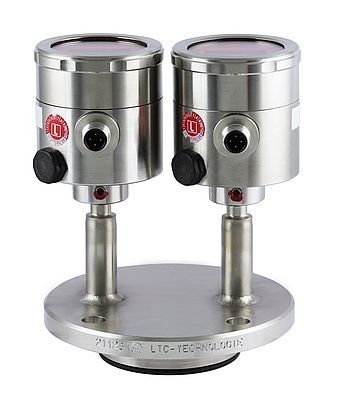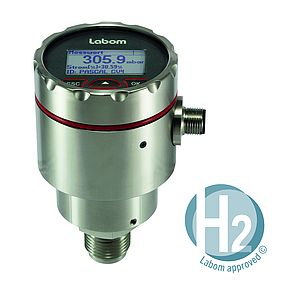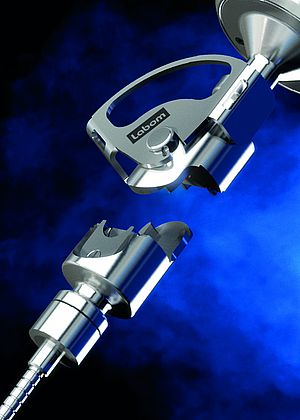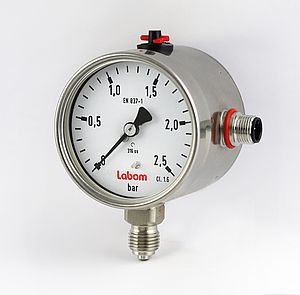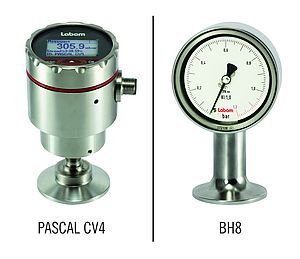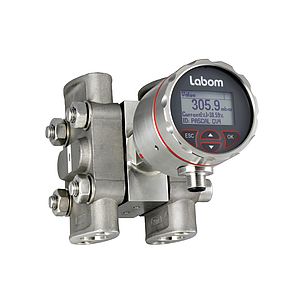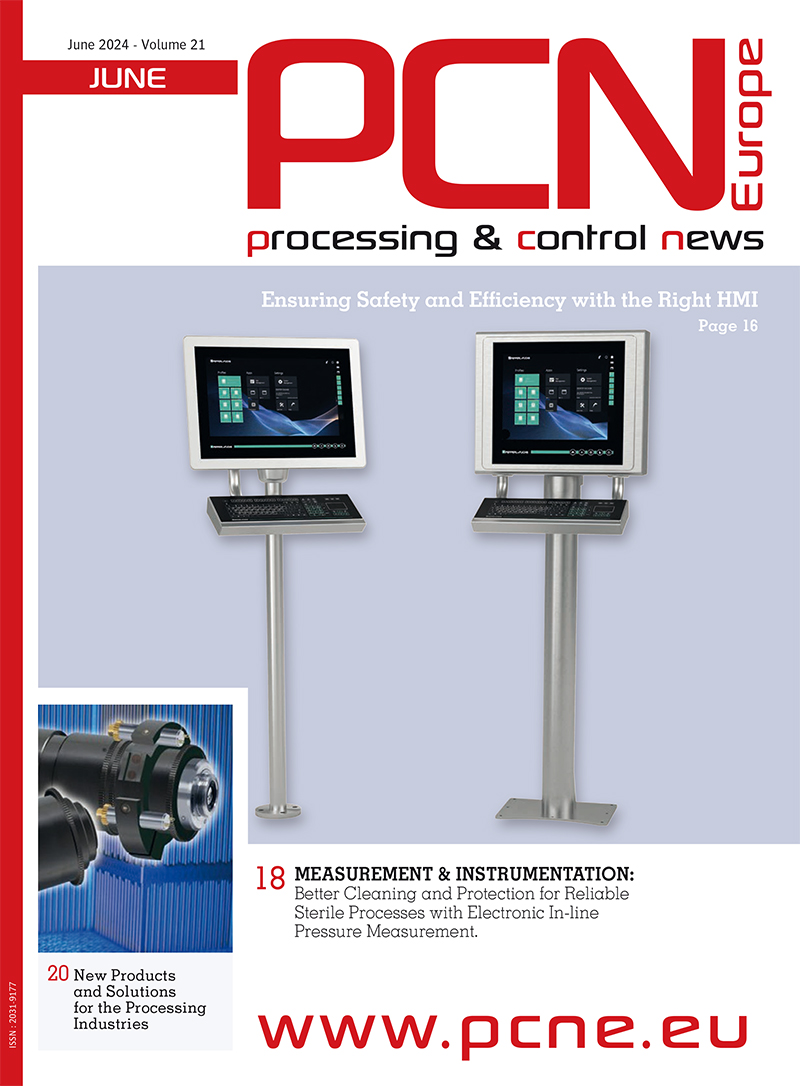Production processes in industry are complex and often involve strongly fluctuating temperatures and pressures – a potential source of error and a safety hazard. In hard-to-reach places and with particularly large or small tanks it can pose a challenge for the measuring devices used. This calls for an individual solution, because "off the shelf" measuring devices are unable to cope. Labom supplies customised measuring solutions that satisfy such needs. For example, in a solution developed for a pharmaceuticals company to measure the filling level of a tank. With significantly varying pressures and a large temperature range the challenge was to measure with very high accuracy from a single measuring point. The solution was to use two pressure transmitters from the PASCAL CV3 series, each covering different measuring ranges and both mounted on the same diaphragm seal.
Diaphragm with design for increased accuracy
Depending on the stage of the production process and the filling level of the tank, the system can switch from a wider measuring range of up to 4 bar to a finer measuring range of up to 400 mbar – ensuring the highest measuring accuracy. The smaller measuring range is overload protected and the sensor disregards the higher pressures. In order to achieve such high levels of measuring accuracy under widely fluctuating temperatures, the diaphragm seal is further equipped with an LTC diaphragm, which Labom developed itself and has patented. The LTC (Low Temperature Coefficient) diaphragm compensates for any temperature-related expansion of the seal’s transmission fluid with a specially formed stainless-steel diaphragm. This increases the measuring accuracy by up to 70 percent compared to conventional sinusoidal diaphragms. The mechanically rugged stainless-steel diaphragm has a thickness of at least 0.1 mm and is positioned between two null points by a special manufacturing process in such a way that it operates almost without any deflecting force. As a result, the diaphragm absorbs any temperature-induced changes in the transmission fluid, almost compensating for these completely.


